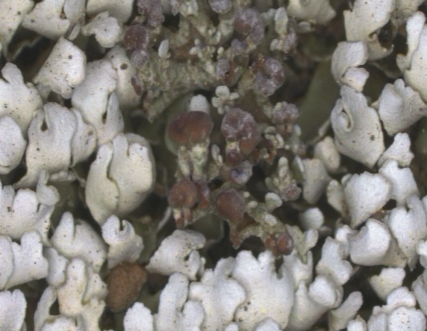New records of the genus Cladonia (Lecanorales, Ascomycota) for the Canary Islands
DOI :
https://doi.org/10.24310/abm.49.2024.17212Mots-clés :
Cladoniaceae, chorology, new records, MacaronesiaRésumé
Cladonia glauca Flörke is reported for the first time on the island of La Palma, and C. dimorpha S. Hammer and Cladonia polydactyla (Flörke) Spreng. on the island of Tenerife, engrossing the list of species of this genus in the area, along with other species for which distribution is expanding.
Téléchargements
Métriques
Références
Athi, T. (2000). Cladoniaceae. Flora Neotropical Monograph. New York Botanical Garden. Bronx, New York, 78, 1–363.
BIOTA (2023). Banco de datos de biodiversidad de Canarias. Gobierno de Canarias. https://www.biodiversidadcanarias.es/
Burgaz, A. R. & Athi, T. (2009). Cladoniaceae. Flora Liquenológica Ibérica, vol. 4. Sociedad Española de Liquenología (SEL), Madrid.
Burgaz, A. R., Ahti, T. & Pino-Bodas, R. (2020). Mediterranean Cladoniaceae. Sociedad Española de Liquenología (SEL), Madrid.
Etayo, J. & Burgaz, A. R. (1997). Contribution to the lichen-forming fungi from the Canary Islands III. The genus Cladonia. Annalen des Naturhistorischen Museums in Wien. Serie B für Botanik und Zoologie, 99b, 721–725.
Orange, A., James, P.W. & White, F.J. (2001). Microchemical methods for the identification of lichens. British Lichen Society, London.
Otte, V., Esslinger, T. L. & Litterski, B. (2002). Biogeographical research on European species of the lichen genus Physconia. Journal of Biogeography, 29(9), 1125–1141.
Pérez-Vargas I., González-Montelongo C., Hernández Padrón C. & Pérez de Paz P. L. (2015). Contribution to the knowledge of the genus Cladonia in Macaronesia. Botanica Complutensis, 39, 31–35. https://doi.org/10.5209/rev_BOCM.2015.v39.49131
Pino-Bodas, R., Ahti, T. & Stenroos, S. (2017). Cladoniaceae of the Azores. Herzogia 30(2), 445–462. https://doi.org/10.13158/heia.30.2.2017.445
Pino-Bodas, R., Martín, M.P., Steinar, J. & Burgaz, A.R. (2010). Insight into Cladonia convoluta-C. foliacea (Ascomycotina) complex and related species revealed through morphological, biochemical and phylogenetic analyses. Systematics and Biodiversity, 8(4), 575–586.
Pino-Bodas, R., Martín, M. P. & Burgaz, A. R. (2012). Cladonia subturgida and C. iberica (Cladoniaceae) form a single, morphologically and chemically polymorphic species. Mycological Progress, 11, 269–278.
Sicilia, D., Hernandez, C. & Burgaz, A. R. (2009). The genus Cladonia in Garajonay National Park, La Gomera, Canary Islands. Cryptogamie Mycologie, 30(3), 305–316.
Stenroos, S., Hyvönen, J., Myllys, L., Thell, A. & Ahti, T. (2002). Phylogeny of the genus Cladonia s.l. (Cladoniaceae, Ascomycetes) inferred from molecular, morphological, and chemical data. Cladistics, 18, 237–278. https://doi.org/10.1111/j.1096-0031.2002.tb00151.x
Stenroos, S., Pino-Bodas, R., Hyvöonen, J., Lumbsch, H.T. & Ahti, T. (2019). Phylogeny of the family Cladoniaceae (Lecanoromycetes, Ascomycota) based on sequences of multiple loci. Cladistics, 35, 351–384. https://doi.org/10.1111/cla.12363
van den Boom, P. P., Clerc, P. & Ertz, D. (2015). New records of lichens and lichenicolous fungi from La Gomera (Canary Islands, Spain), including the new species: Usnea boomiana P. Clerc. Candollea, 70(2), 165–177.
White, F.J. & James, P. (1985) A new guide to microchemical techniques for the identification of lichen substances. British Lichen Society Bulletin, London.

Téléchargements
Publiée
Comment citer
Numéro
Rubrique
Licence
(c) Tous droits réservés Acta Botanica Malacitana 2024

Ce travail est disponible sous licence Creative Commons Attribution - Pas d’Utilisation Commerciale - Partage dans les Mêmes Conditions 4.0 International.
Toutes les informations concernant la licence d'utilisation des travaux publiés dans Acta Botanica Malacitana et les droits d'auteur sont disponibles dans notre Politique Éditoriale.






1.png)


